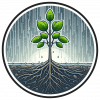Acoustic sensors enable efficient and non-invasive monitoring of a wide range of species, including many that are difficult to monitor in other ways. Although they were initially limited in application scope largely due to cost and hardware constraints, the development of low-cost, open-source models like the Audiomoth in recent years has increased access immensely and opened up new avenues of research. For example, some teams are using them to identify illicit human activities through the detection of associated sounds, like gunshots, vehicles, or chainsaws (e.g. OpenEars).
With this relatively novel dimension of wildlife monitoring rapidly advancing in both marine and terrestrial systems, it is crucial that we identify and share information about the utility and constraints of these sensors to inform efforts. A recent study identified advancements in hardware and machine learning applications, as well as early development of acoustic biodiversity indicators, as factors facilitating progress in the field. In terms of limitations, the authors highlight insufficient reference sound libraries, a lack of open-source audio processing tools, and a need for standardization of survey and analysis protocols. They also stress the importance of collaboration in moving forward, which is precisely what this group will aim to facilitate.
If you're new to acoustic monitoring and want to get up to speed on the basics, check out these beginner's resources and conversations from across the WILDLABS platform:
Three Resources for Beginners:
- Listening to Nature: The Emerging Field of Bioacoustics, Adam Welz
- Ecoacoustics and Biodiversity Monitoring, RSEC Journal
- Monitoring Ecosystems through Sound: The Present and Future of Passive Acoustics, Ella Browning and Rory Gibb
Three Forum Threads for Beginners:
- AudioMoth user guide | Tessa Rhinehart
- Audiomoth and Natterjack Monitoring (UK) | Stuart Newson
- Help with analysing bat recordings from Audiomoth | Carlos Abrahams
Three Tutorials for Beginners:
- "How do I perform automated recordings of bird assemblages?" | Carlos Abrahams, Tech Tutors
- "How do I scale up acoustic surveys with Audiomoths and automated processing?" | Tessa Rhinehart, Tech Tutors
- Acoustic Monitoring | David Watson, Ruby Lee, Andy Hill, and Dimitri Ponirakis, Virtual Meetups
Want to know more about acoustic monitoring and learn from experts in the WILDLABS community? Jump into the discussion in our Acoustic Monitoring group!
Header image: Carly Batist
- 0 Resources
- 0 Discussions
- 4 Groups
Worked as a mechanical engineer for a defence co, then software engineer, then for a research lab specialising in underwater robotics.



- 1 Resources
- 136 Discussions
- 16 Groups
- @ronanwallace
- | He/Him
Research scientist developing conservation technology in environmental monitoring and cultural preservation.
- 0 Resources
- 0 Discussions
- 5 Groups
I'm a software developer. I have open source projects in practical object detection and alerting that is well suited for poacher detection and a Raspberry Pi based sound localizing ARU project



- 0 Resources
- 191 Discussions
- 5 Groups
- @pchwalek
- | He/him/his
I'm a PhD candidate in the Responsive Environments Group, working on electronic systems for human and wildlife monitoring.

- 0 Resources
- 3 Discussions
- 9 Groups
- 0 Resources
- 0 Discussions
- 1 Groups
WILDLABS & Wildlife Conservation Society (WCS)
I hold a PhD in Biological Sciences and specialize in bioacoustics and passive acoustic monitoring of cetaceans in the Argentine Sea and Antarctica. Recently, I've also embraced computing to leverage technology in enhancing our conservation efforts.


- 0 Resources
- 2 Discussions
- 14 Groups
- @capreolus
- | he/him
Capreolus e.U.
wildlife biologist with capreolus.at





- 1 Resources
- 68 Discussions
- 16 Groups
- 0 Resources
- 0 Discussions
- 6 Groups
- @diego_lizcano
- | He/Him
Wildlife biologist interested in biodiversity monitoring and the conservation of mammals. Passionate photographer.
- 0 Resources
- 0 Discussions
- 6 Groups
TerrOïko
I am an ecological data engineer at Terroïko, where I work on OCAPI, a platform for semi-automatic camtrap data annotation, biodiversity data interoperability and biodiversity indicators.


- 0 Resources
- 10 Discussions
- 6 Groups
Aarhus University
Biologist and Research Technician working with ecosystem monitoring and research at Zackenberg Research Station in Greenland





- 12 Resources
- 216 Discussions
- 7 Groups
Article
Read in detail about how to use The Inventory, our new living directory of conservation technology tools, organisations, and R&D projects.
1 May 2024
Article
The Inventory is your one-stop shop for conservation technology tools, organisations, and R&D projects. Start contributing to it now!
1 May 2024
Technology to End the Sixth Mass Extinction. Salary: $132 - $160k; Location: Seattle WA; 7+ years of experience in hardware product development and manufacturing; View post for full job description
1 May 2024
TBC is looking for an applicant to lead on the design, analysis and reporting of data from a wide range of innovative bat population monitoring surveys with a particular focus on passive acoustic monitoring, undertake...
24 April 2024
Full-time 3 year postdoctoral fellowship in Escondido, CA
22 April 2024
In a recent publication we tested Underwater Passive Acoustic Monitoring (UPAM) as a feasible non-invasive technique to study the calling behavior of therathened aquatic Andean frogs under natural conditions in the...
6 April 2024
What can soundscapes tell us about ecosystem functioning and health? We are looking to hire a postdoctoral researcher in ecoacoustics for Nature Recovery at Oxford
2 April 2024
Hussey Labs seeks a senior post-doctoral researcher/senior research associate for movement ecology of Greenland halibut in the context of fisheries management across Baffin Bay-Davis Strait, Eastern Canadian Arctic.
13 March 2024
Catch up on the conservation tech discussions and events that happened during World Wildlife Day 2024!
7 March 2024
Do you know anyone interested in this position? Let them know by sharing widely.
27 February 2024
The Ecological Acoustics and Behavior Lab at the University of New Hampshire seeks a PhD student to join our lab to investigate how forest habitat affects moose occupancy and soundscape in northern New Hampshire
13 February 2024
The primary focus of the research is to explore how red deer movements, space use, habitat selection and foraging behaviour change during the wolf recolonization process.
10 February 2024
May 2024
June 2024
July 2024
event
September 2024
event
April 2024
event
March 2024
event
42 Products
Recently updated products
| Description | Activity | Replies | Groups | Updated |
|---|---|---|---|---|
| I didn't measure the difference in energy consumption whilst it's waiting between recordings. I'll do that. Having it turn off after a few minutes is a good idea.The... |
+7
|
Acoustics | 7 hours 16 minutes ago | |
| Hi Adrew,I'd love to hear more on how you detect the rumbles! We actually just started our second AI for Good Challenge on this topic together with Cornell University where we... |
|
Acoustics | 1 day 5 hours ago | |
| Hello!Long time, no update. @StephODonnell suggested I post here with my thesis and some reflections. ---------------------------------------------------------TL;DR... |
+19
|
Acoustics | 4 days 1 hour ago | |
| I think I've landed on the Wildlife Acoustics Song Meter Mini Bat 2 for now, but I'm definitely interested to see how this cheaper tech progresses |
|
Acoustics | 4 days 19 hours ago | |
| Hi Jesse,For a material to be acoustically transparent (in air), the speed of sound in the material times its density must match that of air. Realistically, any solid... |
+1
|
Acoustics, Biologging | 4 days 23 hours ago | |
| Hi Steph, We appreciate the support! Thanks for the tag and your help managing the community!Patrick |
|
Sensors, Acoustics, Conservation Dogs, Emerging Tech, Open Source Solutions | 5 days 6 hours ago | |
| Hi Sol,If the maximum depth is 30m, it would be worth experimenting with HydroMoth in this application especially if the deployment time is short. As Matt says, the air-filed case... |
|
Acoustics, AI for Conservation, Data management and processing tools, Emerging Tech, Sustainable Fishing Challenges | 5 days 4 hours ago | |
| Oh wow, thank you so much!!!I will keep that four advices in mind! |
|
Acoustics | 5 days 22 hours ago | |
| You won't get any audio if you don't allow enough time for the hydromoth/audiomoth to write. So when you do a continuous recording you need to experiment a little. I'm sure there... |
+3
|
Acoustics | 6 days 23 hours ago | |
| Congratulations! My first hydromoth was just arrived yesterday and so excited! Looking forward for the update from your project!!! |
|
Acoustics, Biologging, Climate Change, Conservation Tech Training and Education, Data management and processing tools, Emerging Tech, Open Source Solutions, Protected Area Management Tools, Sensors, Software and Mobile Apps | 1 week ago | |
| If you have the resources, I would suggest testing the sensitivity and directionality of the system at relevant frequencies both with and without an external mic, and let the... |
|
Acoustics | 1 week ago | |
| Thank you Robyn. Sure I will send more information to your email |
|
Citizen Science, Acoustics, Conservation Tech Training and Education, Human-Wildlife Conflict | 2 weeks ago |
Postdoctoral Research Associate in Ecoacoustics
2 April 2024 2:49pm
Think Wildlife Podcast | The Role of Bioacoustics in Conservation with Bourhan Yassin, Founder of Rainforest Connection
28 March 2024 11:27pm
Hi,
I am Anish and I'm new to this platform! I host the Think Wildlife Podcast and wanted to share a recent episode with Bourhan Yassini. We talk in-depth about the role of AI and bioacoustics in conservation. Tune in to listen more!
AI for Conservation!
4 March 2024 8:51pm
22 March 2024 5:57pm
Thank you for the tip! I'll definitely consider contributing to open source projects and taking part in challenges :)
25 March 2024 5:22am
We could always use more contributors in open source projects. In most open source companies Red Hat, Anaconda, Red Hat and Mozilla, people often ended up getting hired largely due to their contributions on open source projects. These contributions were both technical such as writing computer code and non-technical such as writing documentation and translating tools in their local language.
European Congress on Orthoptera Conservation
22 March 2024 9:35pm
Recording Orthoptera Sounds: International Workshop (Italy)
22 March 2024 9:25pm
How does behavior influence the use of technology for animal detection ?
22 March 2024 7:49pm
Leveraging Actuarial Skills for Conservation Impact
15 March 2024 12:31pm
19 March 2024 6:35pm
Thank you for your response Akiba. I will have a look. 👏🏻
19 March 2024 7:52pm
I would look into the TNFD (Taskforce on Nature-Related Disclosures), Finance for Biodiversity, Accounting for Nature, etc. which are all focusing on how to incorporate nature risk into corporate reporting and sustainability frameworks!
20 March 2024 3:48pm
Thank you Carly, I will definitely take a look.
Unveiling the Cicada Symphony: Seeking Support for Bioacoustics Research
18 March 2024 12:41am
18 March 2024 3:25pm
Ah okay. I found it with google reverse image search:
I thought it would be huge, but it's little. Unbelievable what these tiny things can do for the price. Looks like the battery life will far exceed the capacity of the SD card in it (64GB).
19 March 2024 7:53pm
If you're interested in a free, no-code ecoacoustic analysis platform for your data, check out Arbimon!
BirdWeather | PUC
27 October 2023 7:45pm
2 November 2023 9:20pm
I love the live-stream pin feature!
14 March 2024 10:29pm
Hi Tim, I just discovered your great little device and about to use it for the first time this weekend. Would love to be directly in touch since we are testing it out as an option to recommend to our clients :) Love that it includes Australian birds! Cheers Debbie
16 March 2024 10:47pm
Hi @timbirdweather I've now got them up and running and winding how I can provide feedback on species ID to improve the accuracy over time. It would be really powerful to have a confirmation capability when looking at the soundscape options to confirm which of the potential species it actually is or confirm it is neither to help develop the algorithms.
Also, is it possible to connect the PUC to a mobile hotspot to gather data for device that isn't close to wifi? And have it so that it can detect either wifi or hotspot when in range? Thanks!
The Freshwater Sounds Archive
15 March 2024 10:32am
Introducing The Freshwater Sounds Archive, a global database of sounds produced by freshwater species.
Submit your species-specific or unidentified sounds to the archive now and receive recognition for your contribution in a forthcoming data paper as a co-author!
Senior Post-doctoral Researcher/Senior Research Associate Opportunity: Movement ecology of Greenland halibut
13 March 2024 2:00pm
Labelled Terrestrial Acoustic Datasets
16 February 2024 10:24pm
8 March 2024 11:54pm
Thanks for sharing Kim.
We're using <1 mA while processing, equating to ~9 Ah running for a year. The battery is a Tadiran TL-5920 C 3.6V Lithium, providing 8.6 Ah, plus we will a small (optional) solar panel. We also plan to implement a threshold system, in which the system is asleep until noise level crosses a certain threshold and wakes up.
The low-power MCU we are using is https://ambiq.com/apollo4/ which has a built-in low power listening capability.
9 March 2024 6:25am
<1 mA certainly sounds like a breakthrough for this kind of device. I hope you are able to report back with some real world performance information about your project @jcturn3 . Sounds very promising. Will the device run directly off the optional solar cell or will you include a capacitor since you cannot recharge the lithium thionyl chloride cell. I had trouble obtaining the Tadarian TL-5920 cells in Australia (they would send me old SL-2770s though) so I took a gamble on a couple of brands of Chinese cells (EVE and FANSO) which seemed to perform the same job without a hitch. Maybe in the USA you can get Israeli cells more easily than Chinese ones?
Message me if you think some feeding sounds, snoring, grooming and heart sounds of koalas would be any use for your model training.
9 March 2024 7:01am
Really interesting project. Interesting chip set you found. With up to around 2mb sram that’s quite a high memory for a ultra low power soc I think.
It might also be interesting while doing your research thinking about if there are any other requirements people could have for such a platform with a view towards more mass usage later. Thanks for sharing.
Here's what you missed at World Wildlife Day 2024
7 March 2024 9:02pm
15 March 2024 2:42pm
Support Amazon turtle project
4 March 2024 12:31pm
A PHD POSITION AT NOTTINGHAM TRENT UNIVERSITY
27 February 2024 9:42am
Needing help from the community: Bioacoustics survey
14 February 2024 9:46am
24 February 2024 7:23pm
Was great to chat with you Sofia and I would encourage others in the Acoustics community to help provide input for Sofia's study!
26 February 2024 8:57am
Thank you so much for your encouraging words! I'm thrilled to hear that you enjoyed our conversation, and I truly appreciate your support in spreading the word about my survey within the Acoustics community. Input from individuals like yourself is incredibly valuable to my study, and I'm eager to gather as much insight as possible. If you know of anyone else who might be interested in participating, please feel free to share the survey link with them. Once again, thank you for your support—it means a lot to me!
Best regards,
Sofia
Voice activated recording devices on satellite collars
18 February 2024 7:01am
24 February 2024 8:38am
I am sure Simon can chime in with exact specifications. I do not have it with me now. The centre distance between the attachment holes at each in end is 20mm wich will fit the standard holes in a collar from Vectronics Aerospace.
Simon posted images of the logger attached to a collar on a spotted Hyeana here: https://twitter.com/chamaillejammes/status/1441657479612542990
To-do now done in South Africa:
— Simon Chamaillé (@chamaillejammes) September 25, 2021
☑️ Being ridiculously proud of achieving data transfer over local GSM and LoRa networks for tracker
☑️ Being ridiculously proud of the way our wehear logger fits on lions and hyaenas. Looking forward to listening to their life. pic.twitter.com/CvgvovVjOp
25 February 2024 9:31am
We are studying muskoxen which are exposed to a polar night of between 3-4 month where the sun does not come over the horizon. On the other hand it also means that it will be continously OVER the horizon during the 3-4 summer months.
We are keeping an eye out for kinetic energy harvesting and there has been some interesting progress recently:
https://journals.plos.org/plosone/article?id=10.1371/journal.pone.0285930
@M_Stanton , you provide a nice list of uses of animal borne audio. We could add environmental sounds both abiotic and biotic.
We would LOVE to use audio more for ground truthing behavioural states and we would LOVE if the audio recordings could be GPS time synced...
@jared , it sounds interesting with the mentioned increased capabilities of the Iridium system. Can you link to any references for that?
Cheers,
Lars
26 February 2024 12:43am
I heard it through industry chatter but can't find a news release on it yet.
Insect vibrational communication on AudioMoths
23 February 2024 4:16pm
Funded PhD Opportunity: Moose Acoustics at the University of New Hampshire
13 February 2024 1:21pm
Post-doc possition - Field spanning movement ecology, ecology of fear, bio-logging science, behavioral ecology, and ecological statistics
10 February 2024 7:20am
Bio-Logging Science Symposium
9 February 2024 3:59pm
ISPA: A New System for Transcribing Animal Sounds
8 February 2024 7:17pm
These researchers are introduce the ISPA (Inter-Species Phonetic Alphabet) as a new way to precisely interpret and transcribe animal sounds. By using text to represent sounds, existing human language machine learning models could be used more successfully in field research.
PhD Opportunity - Exploring plants’ sensing capability with vibroacoustics
8 February 2024 5:35pm
Passionate engineer offering funding and tech solutions pro-bono.
23 January 2024 12:06pm
26 January 2024 3:18pm
Hi Krasi! Greetings from Brazil!
That's a cool journey you've started! Congratulations. And I felt like theSearchLife resonates with the work I'm involved round here. In a nutshell, I live at the heart of the largest remaining of Atlantic forest in the planet - one of the most biodiverse biomes that exist. The subregion where I live is named after and bathed by the "Rio Sagrado" (Sacred River), a magnificent water body with a very rich cultural significance to the region (it has served as a safe zone for fleeing slaves). Well, the river and the entire bioregion is currently under the threat of a truly devastating railroad project which, to say the least is planned to cut through over 100 water springs!
In face of that the local community (myself included) has been mobilizing to raise awareness of the issue and hopefully stop this madness (fueled by strong international forces). One of the ways we've been fighting this is through the seeking of the recognition of the sacred river as an entity of legal rights, who can manifest itself in court, against such threats. And to illustrate what this would look like, I've been developing this AI (LLM) powered avatar for the river, which could maybe serve as its human-relatable voice. An existing prototype of such avatar is available here. It has been fine-tuned with over 20 scientific papers on the Sacred River watershed.
And right now myself and other are mobilizing to manifest the conditions/resources to develop a next version of the avatar, which would include remote sensing capacities so the avatar is directly connected to the river and can possibly write full scientific reports on its physical properties (i.e. water quality) and the surrounding biodiversity. In fact, myself and 3 other members of the WildLabs community have just applied to the WildLabs Grant program in order to accomplish that. Hopefully the results are positive.
Finally, it's worth mentioning that our mobilization around providing an expression medium for the river has been multimodal, including the creation of a shortfilm based on theatrical mobilizations we did during a fest dedicated to the river and its surrounding more-than-human communities. You can check that out here:
Let's chat if any of that catches your interest!
Cheers!
2 February 2024 1:22pm
Hi Danilo. you seem very passionate about this initiative which is a good start.
It is an interesting coincidence that I am starting another project for the coral reefs in the Philipines which also requires water analytics so I can probably work on both projects at the same time.
Let's that have a call and discuss, will send you a pm with my contact details
There is a tech glitch and I don't get email notifications from here.
Owl call detection software
17 October 2023 4:47am
26 January 2024 3:33pm
I have a question about Arbimon. I'm working on a project looking for bird use of wet meadow (and associated matrices of habitat). We have two bird lists we've created for BirdNet, a "Master List" of all species (to get an understanding of community data as per input from Indigenous partners) and a "Focal Species List" as per the land managers in put. I will have volunteers doing manual verification + passive listening to attempt to catch false positives and species BirdNet has missed. I recently learned about Arbimon from the Soundscapes to Landscapes project and I'm curious about the audio detector function. Is it detecting spectrograms/sonograms from a provided classifier or does it function similar to BirdNet where we can tell it which species to look for?
30 January 2024 9:05am
We are currently working on Eurasian Pygmy, Tengmalm's and Tawny owl calls recognition. It's not a trivial task if you want to include different call types (male, female, pair, chicks), that's why we started with only 3 species. If you are interested in these 3 European species, drop me a line.
30 January 2024 10:53pm
Hi Teresa,
Thanks for your interest in Arbimon! The platform has a couple different analysis tools that range from unsupervised (like audio event detection & clustering, or AED-C) to semi-automated (pattern matching, random forest). We've got lots more info about each in our support docs here.
The AED-C is an unsupervised machine learning model, so you aren't providing any labels (though the validation page allows you to assign events or clusters as particular species after the fact). The pattern matching is a cross-correlation template matching function where you provide 1 template (example of the species-specific call you're looking for) and the algorithm looks for matches similar to that template. Random forest is a decision-tree-based machine learning model where you provide training clips (presence & absence clips for a species) which the model uses to learn how to classify that species' call. We have developed a number of CNNs (like BirdNet is) but they have more of a regional focus (e.g., one for Kenya, one for western Sumatra, etc. etc.). Right now we run these on the backend, but we are currently working on a public-facing CNN page that we hope to phase in this year.
Hope that helps, but feel free to reach out if you have more questions! You're welcome to also email me directly at [email protected] .
All the best,
Carly
Detection and removing of windy events in wild acoustic recordings
12 June 2023 1:28pm
12 July 2023 4:07pm
Hi everyone!
@baddiwad was one of our fantastic speakers in our June Variety Hour show, so we had the chance to hear about her work in a lot more detail. If you're interested in finding out more about Franscesca's project, catch up here:
19 July 2023 12:21am
Audacity has a noise filter which one 'trains' on a piece of recorded noise. Perhaps it is worth a shot. Freeware, open source, and with a community of developers and users.
30 January 2024 2:00pm
Hi Francesca!
Did you managed this problem somehow? Can you post the workflow or the solution that worked for you?
Power managment/Recharging System and Communication System
2 January 2024 4:06pm
26 January 2024 8:49am
"Seychelles and South Africa did not allow Starlink to operate"
This is not good, has implications for anti-poaching measures.
26 January 2024 9:03am
Power usage for microcontrollers with solar is much more manageable. For Raspberry Pi's and higher it gets expensive and big.
I'm quite impressed by the specs from the Goal Zero Yeti devices. This can have high capacity and be charged with Solar. Not small though. And the price is not in proportion to the Pi's.
So this 200x model for example, would be close to 16 days running the audio recorder. Let's say 10. without solar. Add solar? Depends on the size of the panels I guess. Power usage for mobile networking? Depends on how much you transmit.
Probably some well documented experiments would be really nice for people here. Sounds like something nice for the next set of grants :)
26 January 2024 2:11pm
Real nice video. I'll have another look in the weekend in detail.





































































22 March 2024 12:29pm
Welcome, Have you considered participating in any of the AI for Good challenges. I find it is good way to build a nice portfolio of work. Also contributing to existing open source ML projects such as megadetector or to upstream libraries such as PyTorch is good way to getting hired.